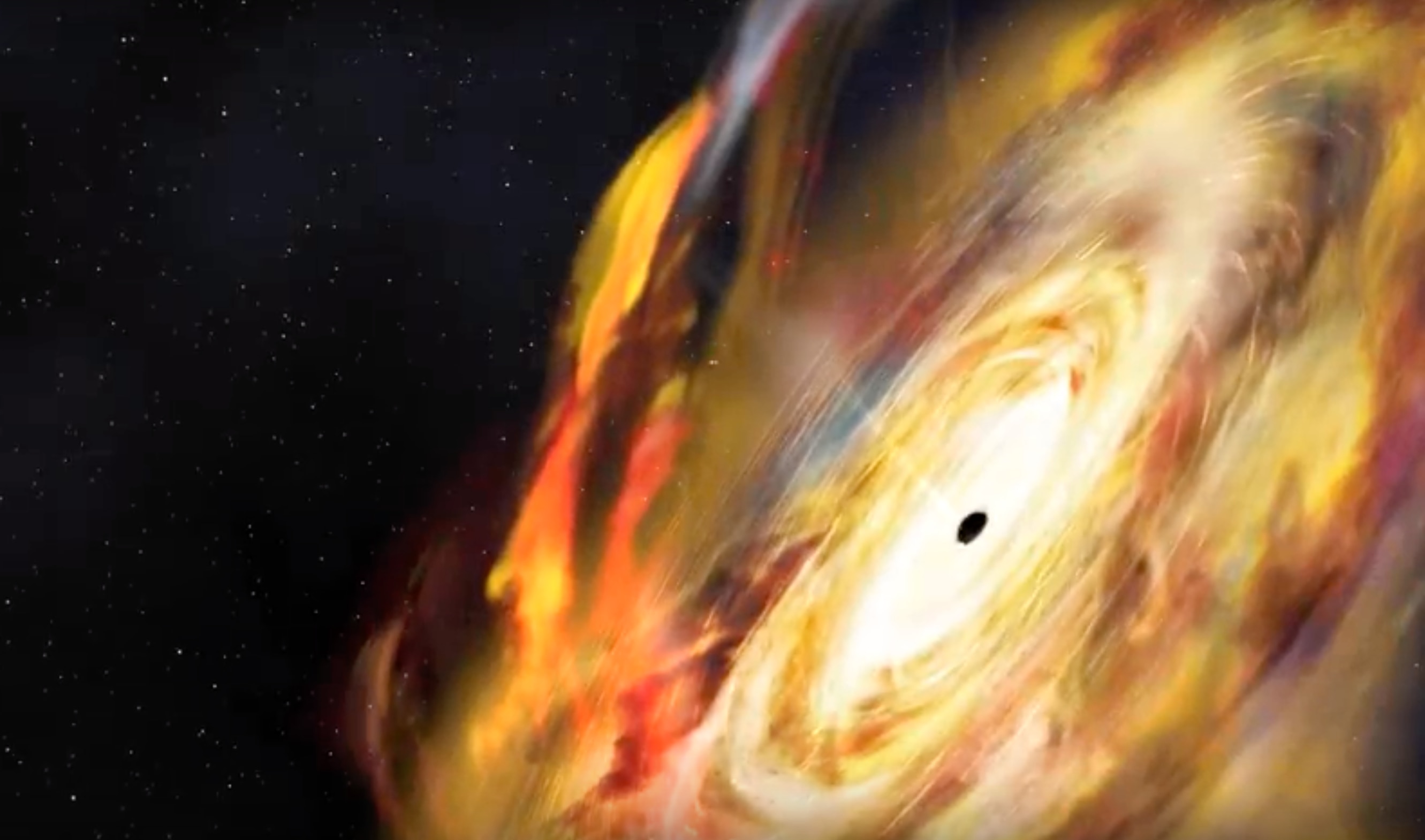Create a free profile to get unlimited access to exclusive videos, sweepstakes, and more!
There might be a way to find out what a black hole ate

After matter gets eaten by a black hole, all its information is forever lost to the cosmos … or is it?
Even light cannot escape the gravitational jaws of a black hole. Anything that is unfortunate enough to be consumed has gone past the point of no return, at least according to modern physics. But now some physicists are saying that is not necessarily the case. There might be a way to find out what that black hole devoured using quantum mechanics—the rules of subatomic particle behavior at infinitesimal scales.
"In quantum physics, information cannot possibly be lost," Kevin Landsman, a physics graduate student at the Joint Quantum Institute (JQI) at the University of Maryland in College Park, told Live Science.
Landsman and his colleagues, who recently published a study in Nature, believe it could be possible to find out what information fell into a black hole, kind of like dissecting its stomach contents. They believe that information thought to be unrecoverable might actually be “scrambled” or hiding among inextricably linked subatomic particles. The team proved they could actually measure when information was scrambled inside the guts of a black hole, and how quickly that happened.
Quantum mechanics states that pairs of particles will spontaneously appear on the fringe of a black hole’s event horizon. While one particle falls into the black hole, the other is propelled into space, taking with it a tiny amount of the black hole’s energy. Over time, enough energy is stolen from the black hole that it evaporates. This is Hawking radiation.
So wait a second. If quantum mechanics claims that no information about a particle can ever be destroyed, then why do the rules of relativity contradict that by stating that no information can be extricated from particles that have ventured past the event horizon?
While the black hole information paradox might seem to get in the way, Landsman and his team tried to defy it using the particle in a Hawking radiation pair that gets away. Even though it escapes, it is still inextricably linked to its (now dearly departed) partner, meaning that its properties could tell us about the properties of the one that was swallowed.
Black holes aren’t exactly the type of thing you can bring into a lab, so Landsman and his team set up a much simpler model using a quantum computer they created. This model used three entangled atomic nuclei of the element ytterbium. The computer used the entangled quantum bits, or qubits—the basic unit of information in quantum computing—and an additional external qubit to see when the particles became scrambled and how severely.
Not only did the nuclei become scrambled, but calculations revealed that the trio of particles became scrambled exclusively with each other and nothing else floating around.
“With scrambling, one particle’s information gets blended or spread out into the entire system. It seems lost, but it’s actually still hidden in the correlations between the different particles,” Landsman explained to Sci-news.
While we’re still light-years away from proving this with a real black hole (if any spacecraft can ever get close enough), it’s still pretty mind-blowing.
(via LiveScience)


























